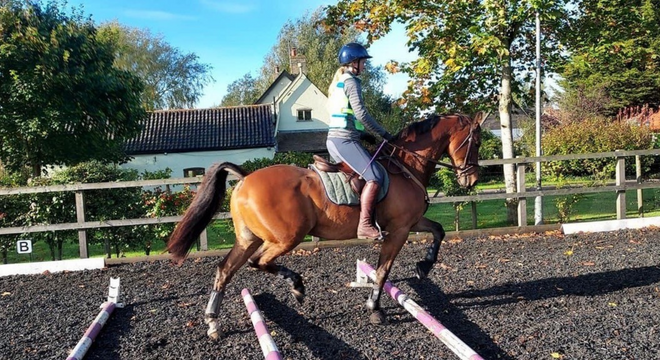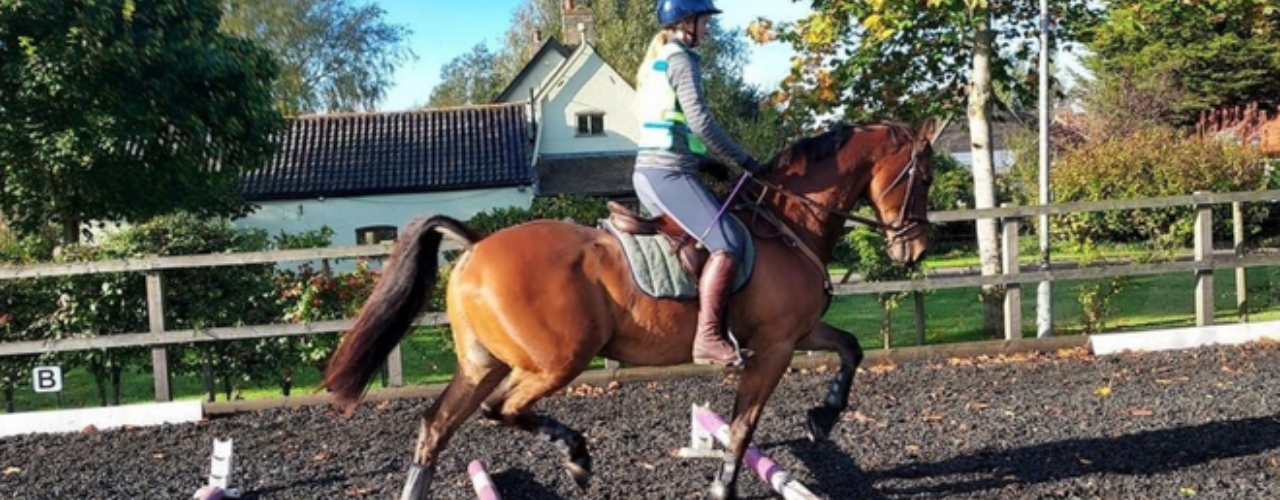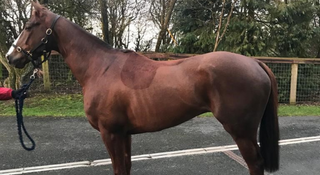
The power of polework
Polework is a fun and different way to exercise both horse and rider. It involves setting out variations of poles on the ground to...
10 August 2022
Read More
Raised poles and grids
Raised poles help to encourage the horse to flex its limbs more, especially the knees and hocks. They encourage a quicker reaction over the poles and enable the horse to judge the poles better. Continued work over poles should help to improve cadence of the paces.
The benefits of gridwork
For the rider, gridwork is a great way to pick up positional faults like straightness over a fence, timing with folding and confidence through a combination and over a slightly bigger fence without worrying about striding; making jumping a lot of fun.
For the horse, gridwork can improve technique over a fence, encouraging a nice, rounded jump, with the horse pushing off from its hocks and using its back to ‘bascule’ over the fence. Gridwork can also help with straightness and confidence through a combination and help with canter as the horse needs to adjust to fit the correct stride inbetween fences.
The role of placing poles
Placing poles help young or inexperienced horses and riders get the striding right for the fence behind it, which normally leads to a better and more comfortable jump in the grid. Many grids are started from trot and the placing pole helps the first jump to be positive and get the horse coming off the floor.
Try these exercises with your horse
Exercise 1: Raised trot poles
Put two sets of four poles across the diagonal so you make a figure of eight that you can ride. The poles should be 5 pigeon steps apart (toe to heel steps). Then, using pods raise alternate ends of each pole – which enables you to work both sides of your horse evenly. Ride 3 times on each set, then move to canter pole distances (10 pigeon steps) and try and keep the canter at the same even rhythm throughout. The challenge is whether you can you keep all the poles up!
Exercise 2: Warm up Cross pole
Put the grid in the centre of the arena so you can come to it on both reins without having to change it around all the time. Start with a placing pole to a cross pole. Put a pole on the ground and then 3 human strides to a cross pole. The height will depend on ability, but it is always better to start lower and increase the height. Do this on both reins twice out of trot. Next, add an upright pole after the cross pole with 6/7 human strides between each fence. Again, start small and build up the height. Come from trot off both reins twice. Remember to always try and end with a good jump.
Exercise 3: Oxer/Spread at the end
Add your final element on to the end of the grid; a spread jump. Pace out 6/7 human strides and then put a small spread with a cross at the front first to make it more inviting. Jump that twice and then put the cross to a straight, slightly lower than back rail. Jump it a couple of times and then increase the height if needed.
Exercise 4: Bounces
Use your first cross pole from the grid and then stride out three big human strides and put another cross pole to form a bounce jump. Once horse and rider are happy jumping through this, you can add a third part with the same distance to it. Start with a cross pole and then you can change it to a small upright. Make sure you do not sit up in between the bounces as you won’t have time. Instead keep in the light seat position and feel the horse coming up to meet you.
Tips: 6/7 human strides is one canter stride for a horse. Always adjust the striding for your individual needs. If your horse does not understand any of the exercises or makes mistakes be patient and take the horse back to the beginning and slowly rebuild.
Polework should be fun; if you are ever unsure about any part of the exercises, please ask for help from a qualified professional.
MM-21504

Polework is a fun and different way to exercise both horse and rider. It involves setting out variations of poles on the ground to...
10 August 2022
Read More
Retraining a racehorse to become a leisure or competition horse can be very rewarding and enjoyable.
02 December 2021
Read More
Retraining a racehorse to become a leisure or competition horse can be very rewarding and enjoyable.
02 December 2021
Read More